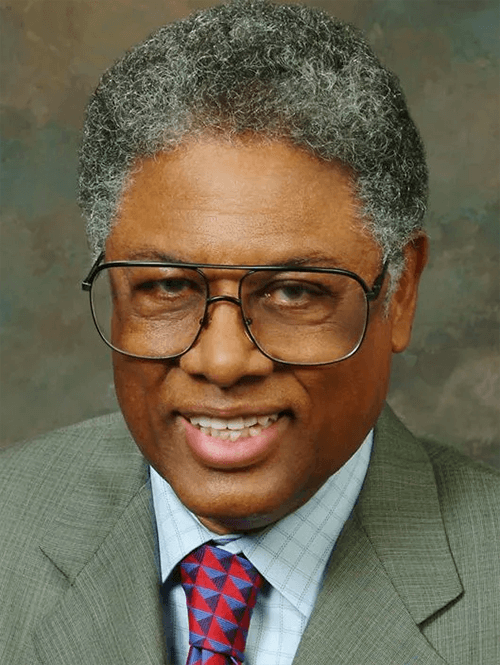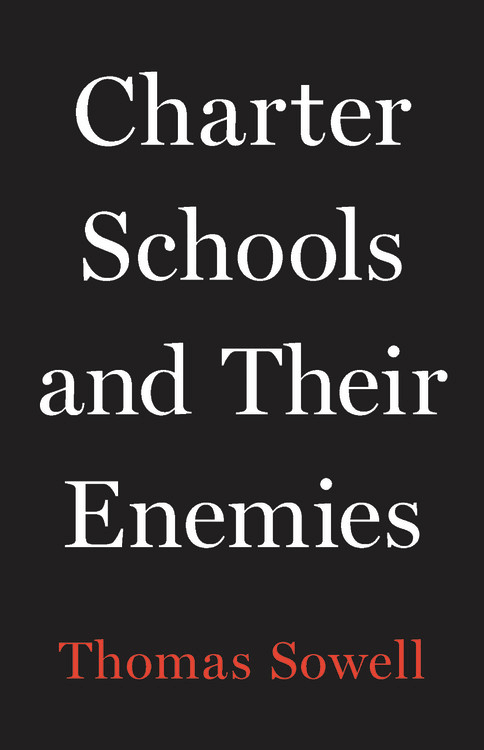
Dunbar High School, in Washington, D.C., produced from 1870 to 1955 the first black federal judge, the first black general, the first black cabinet member, and America’s first three black women PhDs—all of it in the years before Brown v. Board of Education.
Charter Schools and Their Enemies
by Thomas Sowell
Basic Books, 2020, $30, 288 pages.
As reviewed by Robert Pondiscio
There is a reason we’re told to respect our elders. It’s bracing and edifying to listen to voices of wisdom and experience. Those whose time grows short are compelled to speak clearly and directly. Thomas Sowell is one such voice. At age 90 and having broken his promise not to pick up his pen again, he has turned his gaze to the world of education, delivering Charter Schools and Their Enemies at a moment when those schools have come under intense scrutiny, their right to exist in question. Charter school leaders need their spines stiffened these days; their overreaching critics have earned a metaphorical punch in the nose. Sowell delivers both in a book he dedicates, as a reminder of what’s at stake, “to those children whose futures hang in the balance.”
Among the most prominent Black intellectuals of the last century, Sowell is an economist, a sharp cultural observer, and a prolific author and columnist who has weighed in with erudition over his long career on social policy, race, education, and many other subjects. His big-picture perspective allows him to distinguish the forest from the trees and to write with the clarity and moral authority that reformers and charter school advocates once wielded like a cudgel before falling into the thrall of more sophisticated yet enervating notions about race and the broad suite of social justice issues—housing, immigration, policing, and incarceration—that are ostensibly holding back children of color every bit as much or more than the third-rate schools in which we warehouse them and into which charter enemies would gladly march them back given the chance.

Thomas Sowell
In his preface, Sowell recounts an exchange with Irving Kristol, the editor of The Public Interest, nearly half a century ago about what might be done to improve educational outcomes for black school children. “You are talking as if good education for black children is something that has never happened before, and that has to be created from scratch,” Sowell replied. He described to Kristol the history of Dunbar High School, in Washington, DC, which produced from 1870 to 1955 the first black federal judge, the first black general, the first black Cabinet member, and America’s first three black women PhDs, among many others whom the school launched to elite colleges and careers—all of it in the years before Brown v. Board of Education. Stunned, Kristol commissioned Sowell to research and write a pair of pieces on “Black Excellence” in education.
America’s charter school movement, still not quite 30 years old, has not yet produced a Dunbar High and never will without beating back threats from teachers unions, politicians, and regulators determined to make the charter schools look more like the traditional schools that families are generally seeking to escape. Sowell’s mission is to provide ammunition for the fight. His defense is both spirited and scholarly. It includes enough data, charts, and graphs (they consume half the book) to warm wonkish hearts and to embarrass charter critics. Their hostility, Sowell insists, is a function of money, power, and political advantage, but rarely the best interests of children.
Sowell focuses his analysis in the opening section of the book on a comparison of charter and district schools with “truly comparable students,” which he defines as charters and publics educating children of the same socioeconomic status, in the very same building, with one or more classes serving kids in the same grades. This strict and narrow apples-to-apples comparison limits the scope of Sowell’s analysis to approximately 23,000 students in New York City, where charter schools are “co-located” under the same roofs as schools run by the City’s Department of Education. By limiting his comparisons to networks with schools in five or more buildings, Sowell arguably puts his thumb on the scale in favor of well-established networks, or charter management organizations, with successful, replicable models. His book might be more accurately titled CMOs and Their Enemies. The five networks that make the cut are KIPP, Success Academy, Explore Schools, Uncommon Schools, and Achievement First. Explore is the negative outlier; the other four are among the nation’s best-run and highest-performing CMOs.
Still the comparison is stunning. In the aggregate, the charter school students achieve proficiency in English language arts at a rate five times better than students in competing public schools in the same buildings. In math, the proficiency advantage swells to nearly seven to one. “What is equally remarkable is how unwelcome this success has been in many places,” Sowell writes warming to his main theme, citing legal limits on the numbers of charter schools permitted “utterly without regard to whether particular charter schools are producing good or bad educational outcomes.”
 Sowell evinces little patience for concerns such as whether or not charters serve every child. Or whether they should. “The most fundamental fact about traditional public schools is that compulsory attendance laws guarantee that children of all sorts of dispositions and capabilities must attend. To assume that they all want to be there, and all are striving to achieve success there, is to ignore the most blatant realities.”
Sowell evinces little patience for concerns such as whether or not charters serve every child. Or whether they should. “The most fundamental fact about traditional public schools is that compulsory attendance laws guarantee that children of all sorts of dispositions and capabilities must attend. To assume that they all want to be there, and all are striving to achieve success there, is to ignore the most blatant realities.”
He is equally dismissive of the charge that charters are “segregated” schools. They are “schools in predominantly minority communities, where motivated minority students are educated among other motivated minority students,” Sowell writes. “The successful track record of these charter schools, and the contrasting educational futility of racial ‘integration’ crusades, both demonstrate that white classmates are neither necessary nor sufficient for non-white students to achieve educational success.” Still, “social crusades,” Sowell warns, “have their own momentum, and mere facts are often unable to stop them.”
At a time when many of the best minds in education seem to have accepted uncritically or been cowed to agree that the sum and substance of educational failure is racism—not school culture or competence, or the ability to nurture student initiative—or that black excellence is not possible without white permission or allyship, Sowell’s message may fall on deaf ears. This is the curse of age and wisdom. The hard-won clarity of our wisest elders is ours to profit from, if we choose to listen. But younger people have never had much use for all that. And is any field more dominated by youth, presentism, and certainty than education?
The winds buffeting charter schools right now are unlike anything we have seen before, politically, socially, and culturally. Sowell’s book is warning us to avoid a day many decades from now, when some future prominent black intellectual might have occasion to lecture white colleagues who are talking as if good education for black children is something that has never happened before, and has to be created from scratch. He will describe the education he received at Uncommon Schools or Success Academy to his stunned and disbelieving colleagues. They will find it incredible that such schools once existed, or that we allowed them to drift, then die, unappreciated and undefended.
Robert Pondiscio, author of How The Other Half Learns: Equality, Excellence, And The Battle Over School Choice, is senior fellow and vice president for external affairs at the Thomas B. Fordham Institute.
By: Robert Pondiscio
Title: Charter Schools and Their Enemies – by Robert Pondiscio
Sourced From: www.educationnext.org/charter-schools-and-their-enemies-thomas-sowell-book-review/
Published Date: Thu, 09 Jul 2020 09:00:15 +0000
No comments:
Post a Comment